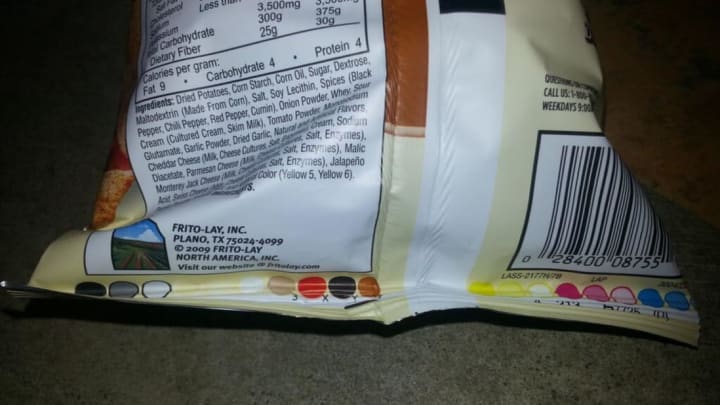There's a lot of information crammed onto food packaging these days, and along with all of the helpful stuff (like nutritional data and ingredients), there's also the mysterious, multicolored row of circles or squares that serves a very important purpose ... for the printer.
Referred to as “printer's color blocks” or “process control patches,” this grid of color swatches indicates which hues of ink were used to produce the design on the package. The printer checks these colored circles or squares to determine whether a package conforms to the necessary color scheme for the product. In the case of any problems, the color blocks let both the human and computerized printers know if a deficiency (or surplus) of color caused the issue.
The color blocks are usually pictured as circles on most bagged products and squares on boxed goods, with the most common being black, cyan, magenta, and yellow, since they're the basis of most colors produced by printers. If the bulk of the package is printed in one or two other colors, they'll usually turn up in their own blocks (called “spot colors”), too. Bags of Cheetos, for example, will almost always have at least one orange block, but usually two or more in different hues.
If you don't see a set of color blocks on your bag of chips or box of cookies, you don't need to worry. The decision to include this element is an option, not a rule—though most large-scale, mass-produced products have some variation of color blocks on their packages. Some companies also crop off the color blocks during the packaging process.
Oh, and if you see the color blocks, you'll probably find a symbol that looks like the cross-hairs of a rifle scope somewhere on the package, too. These “register marks” (or “position marks”) are used to align all of the colors printed on the packaging—yet another helpful tool for the printer, but not really of any use to consumers.
